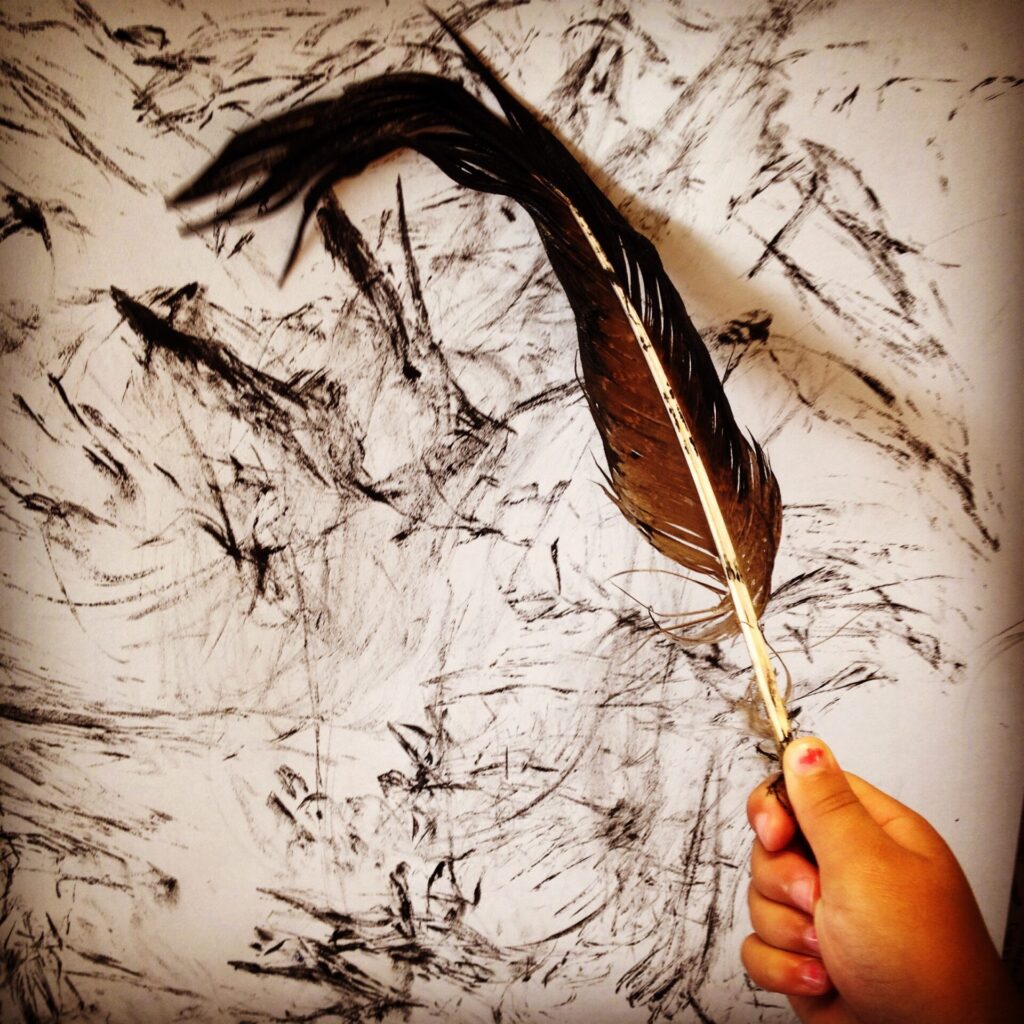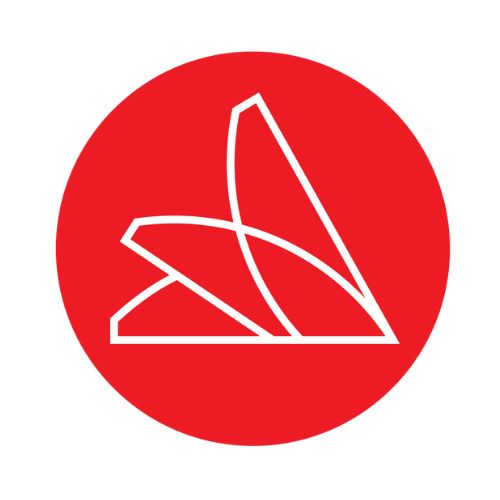
About our guest blogger…
Rudi Monson’s daughter is currently in her second year of preschool at the Lawrence Arts Center. Her older daughter spent three years at the Arts Center’s Early Childhood Education program, including kindergarten. Rudi holds a bachelors degree in Elementary/Middle School Education from the University of Kansas, and a masters in Curriculum and Instruction with ESL emphasis from Concordia University in Chicago. She taught Language Arts and Math in middle school in Chicago for 12 years. Her experience as both an educator and parent gives her a unique perspective on Early Childhood programming at the Lawrence Arts Center.
“Play is often talked about as if it were a relief from serious learning. But for children, play is serious learning. Play is really the work of childhood.”
-Fred Rogers
When we pick up our kids at the end of the day and help carry out their wet paintings, their Styrofoam and toothpick sculptures, and their glittered masterpieces, we can see the “arts-based” part of the Lawrence Arts Center’s Early Education Program. Paint in our children’s hair and sand in their shoes are signs of a day well spent. However, a lot of parents might also be looking for signs of an academic curriculum. Or at least, they are looking for traditional signs of it. We don’t see handwriting practice where they trace letters. No workbook pages circling the item that doesn’t belong. Not math sheets of counting dots or drawing shapes. Unfortunately, this may lead some to believe that our kids aren’t learning any of these academic ideas. This couldn’t be further from the truth. From what I’ve seen in the classroom and heard from the teachers, our kids are being met exactly where they’re at developmentally. They’re being offered even richer and more authentic academic learning experiences. You know all those cute little eyedropper paintings? And the huge wooden blocks in the classroom? And the shovels outside? Get ready, it’s all so much more than I thought!
Our Early Ed Talks series starts today with WRITING: “What are the components of learning to write?”
- The mechanics of writing
- Hand strength to hold a writing utensil
- Applying the right pressure to the paper
- Letter formation and sounds
- The purpose of writing
- The words we speak and think can be recorded in written form
- Written language can be used to share information, ideas, and feelings to others
How are these writing components taught in our early childhood classrooms at the Lawrence Arts Center? In the most fun, playful, rich, and delightful ways!
The muscles in the hand must develop a pincer grasp to be able to hold a writing utensil. They are building that strength with the pipette (eyedropper) and squirt bottle they use to paint. The clothespins they must pinch to hang their art. The tongs they use to grasp pom-poms in the sensory table. The hole punchers and staplers they use at the writing center. The shovels they use outside in the sand. Rolling and squeezing the forming play-dough builds hand strength, as does using scissors to cut different strengths of paper and play-dough.
Even the use of the easel is intentional; it promotes the vertical movement of writing and better hand grip on the brush. Kids must learn to use enough pressure for the paint to appear, but not too much or the paper will tear! The easel also allows children to practice crossing the body’s midline to perform tasks on the opposite side of their body.
Teachers find ways throughout the day to promote children’s natural interest in telling stories and expressing themselves. Teachers may ask the children: “Is there a story in your artwork?” “Tell me more about your art.” “Would you like to tell me a story?” “May I write your story down?” When asked these questions, teachers actively listen and write down what the kids have dictated, verbatim without correcting grammar, sentence structure, etc. Kids see how they can use words to share ideas and these words can be written on paper for others to understand. Equipped with clipboards and markers, our kids are often taken to the “outdoor classroom” to explore and be inspired. The children’s drawings and stories are windows into what is most important to them and their understanding of the world around them at that moment in time.
As preschool children begin to learn to identify letters and sounds, our teachers choose to have kids start with their names. These letters are the most important first letters to learn. As Kindergarten teacher Becky says, “Your name is your lifelong letters!” Soon, they recognize the letters in their friends’ names as well. They will see others writing or painting names, that may spark their interest. If we see an interest in writing, we may start with writing the child’s name in dots and they will then connect the dots. The daily availability of the writing center allows children to “write,” draw, and work at their own pace and interest level.
The Kelly Galloway Kindergarten curriculum expands our writing skills in multiple ways. Kindergarten-age children continue the work on letter formation, refining their skills as they master them. And yet, of course, it’s not work; it’s play. They form letters out of play-dough. They paint letters. They build letters out of blocks, gems, legos, wiki sticks, and even with their bodies. They trace letters in shaving cream, in cornstarch, in sand, in a Ziploc bag filled with paint, or with a wet paintbrush over chalk outside. They sort letters according to their shape characteristics (straight lines, diagonal lines, curves, holes, dots, etc).
“If it hasn’t been in the hand, or the body, it can’t be in the brain”
– Bev Bos
When they are ready for more, teachers share the alphabet in small sets of letters. Learning how to form letters and learning the letters’ distinct sounds are intertwined and are presented in a variety of play activities, such as sorting and matching objects by initial sounds, listening to letter sounds and hunting for hidden letters outside, or identifying letters from words around them in the environment (on cereal boxes, road signs, stores, etc). Soon children are blending letter sounds and building words. Kindergarten students are encouraged to keep journals (handmade, of course) as a place to draw and write and process their current understanding of the world. They may use invented spelling as they record their ideas, new vocabulary words that interest them, or their friends’ names.
Through their well-established and intentional curriculum, the Arts Center Early Childhood program truly values every stage of writing development and does so in a developmentally appropriate way, through play and building on children’s intrinsic interests. Writing is a vast continuum and our kids are in the most enriching environment to explore what it means to write!
– Rudi Munson
